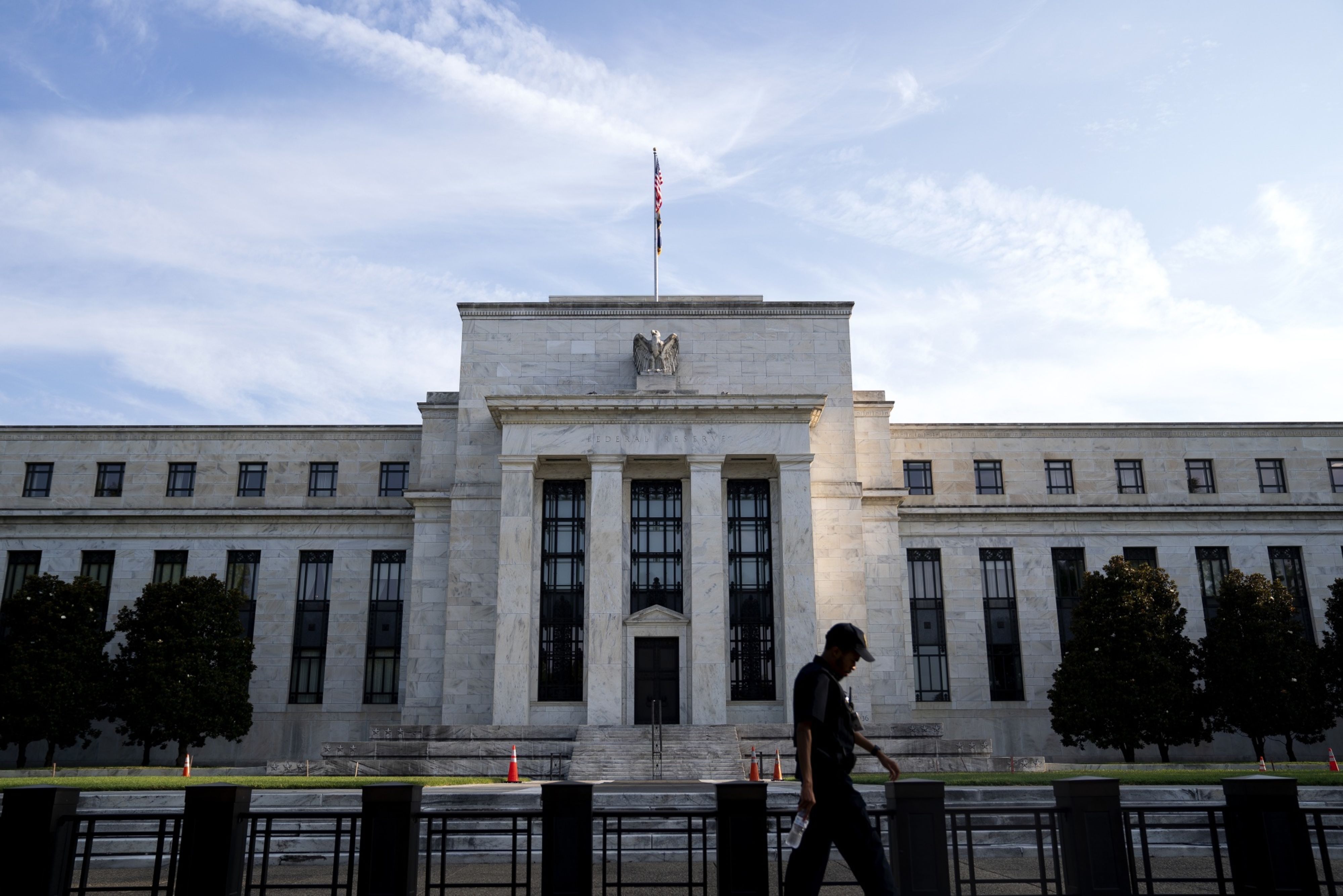
Federal Reserve officials laid out a long-awaited plan to shrink their balance sheet by more than $1 trillion a year while raising interest rates "expeditiously" to counter the hottest inflation in four decades.
The roadmap for reducing the assets they bought during the pandemic was spelled out on Wednesday in minutes of their March meeting, when officials raised rates by a quarter point. They debated going bigger but chose caution in light of the uncertainty caused by Russia's invasion of Ukraine, the record of their discussion shows.
Recommended For You
In addition, "many" who attended the March 15 and 16 Federal Open Market Committee (FOMC) meeting viewed one or more half-point increases as possibly appropriate going forward if price pressures fail to moderate.
Analysts saw this as evidence that officials fear that they should have acted sooner against inflation and are now in a hurry to get their main rate—currently in a target range of 0.25 percent to 0.5 percent—up to neutral, the theoretical level that neither speeds up the economy nor slows it down.
"The FOMC stayed far too easy for far too long and has belatedly realized their mistake," said Stephen Stanley, chief economist at Amherst Pierpont Securities LLC. "They are now scrambling to get policy back to neutral as quickly as they can. Once they arrive at something close to neutral, they will have to ascertain over time how far into restrictive territory they have to move to get inflation back under control."

The effort to reduce the balance sheet will extend a sharp pivot toward fighting inflation, as the Fed was buying bonds as recently as last month as it attempted a smooth wind-down of pandemic support. The FOMC is expected to approve the balance-sheet reduction at its next gathering on May 3 and 4. The plan for shrinking the balance sheet came via a staff presentation to officials.
Officials proposed shrinking the Fed's balance sheet at a maximum monthly pace of $60 billion in Treasuries and $35 billion in mortgage-backed securities—in line with market expectations and nearly double the peak rate of $50 billion a month the last time the Fed trimmed its balance sheet from 2017 to 2019.
They backed phasing those caps in over three months "or modestly longer if market conditions warrant."
The record of the closed-door meeting showed a lot of support among the 16 officials who took part for raising rates by 50 basis points (bps).
"Many participants noted that one or more 50 bps increases in the target range could be appropriate at future meetings, particularly if inflation pressures remain elevated or intensify," the minutes said. "Participants judged that it would be appropriate to move the stance of monetary policy toward a neutral posture expeditiously."
The neutral rate is estimated to lie around 2.4 percent, according to the median estimate of officials released at the meeting. Officials "also noted that, depending on economic and financial developments, a move to a tighter policy stance could be warranted," the minutes said.
What Bloomberg Economists say:
The minutes provide "a potential explanation for Powell's sharply hawkish tone at the March meeting: It appears that Fed staff—who over the past year have had a more benign inflation outlook than FOMC participants—have become noticeably more alarmed about inflation developments."
—Anna Wong, chief U.S. economist
U.S. central bankers since then have said they could move more rapidly on policy, after Russia's invasion sent food and energy prices soaring, with Powell declaring on March 21 that a half-point increase was on the table if needed in May.
With getting to neutral the clear policy goal now, investors will position around how fast the Fed intends to get there. Near-term data on inflation progress will play a large role in those decisions. Powell said last month that as "the outlook evolves, we will adjust policy as needed." Futures markets are pricing in high probability of a half-point hike at the May meeting. The impact on balance sheet reduction on financial conditions, though, will likely be observed carefully in the second half of the year.
"I think 50 basis points is going to be an option that we will have to consider, along with other things," Kansas City Fed President Esther George said in a Bloomberg News on Tuesday. "We have to be very deliberate and intentional as we remove this accommodation. I am very focused on thinking about how the balance sheet moves in conjunction with policy-rate increases."
A bigger risk and policy challenge will come if Russia's invasion of Ukraine sustains high food and energy prices for enough time to set off another round of wage and price hikes. That would likely have to be met with even more aggressive policy by the Fed if it starts to unseat expectations about the central bank's ability to anchor prices.
"Against a highly uncertain and rapidly shifting economic backdrop, the Fed has shifted from talk to action," said Guy LeBas, chief fixed income strategist for Janney Montgomery Scott in Philadelphia. "Financial conditions are going to remain volatile for much of the next six months as a result."
© Touchpoint Markets, All Rights Reserved. Request academic re-use from www.copyright.com. All other uses, submit a request to [email protected]. For more inforrmation visit Asset & Logo Licensing.



